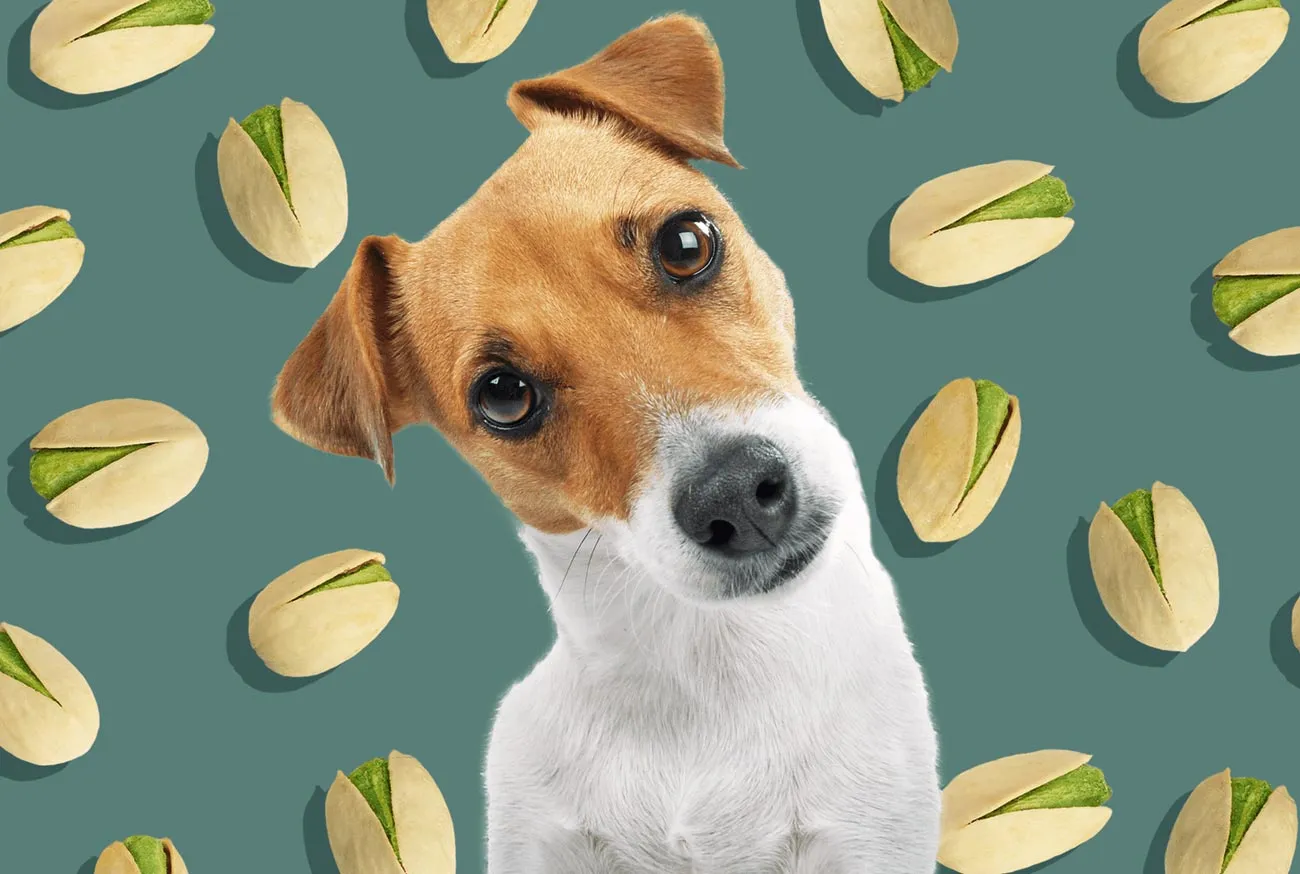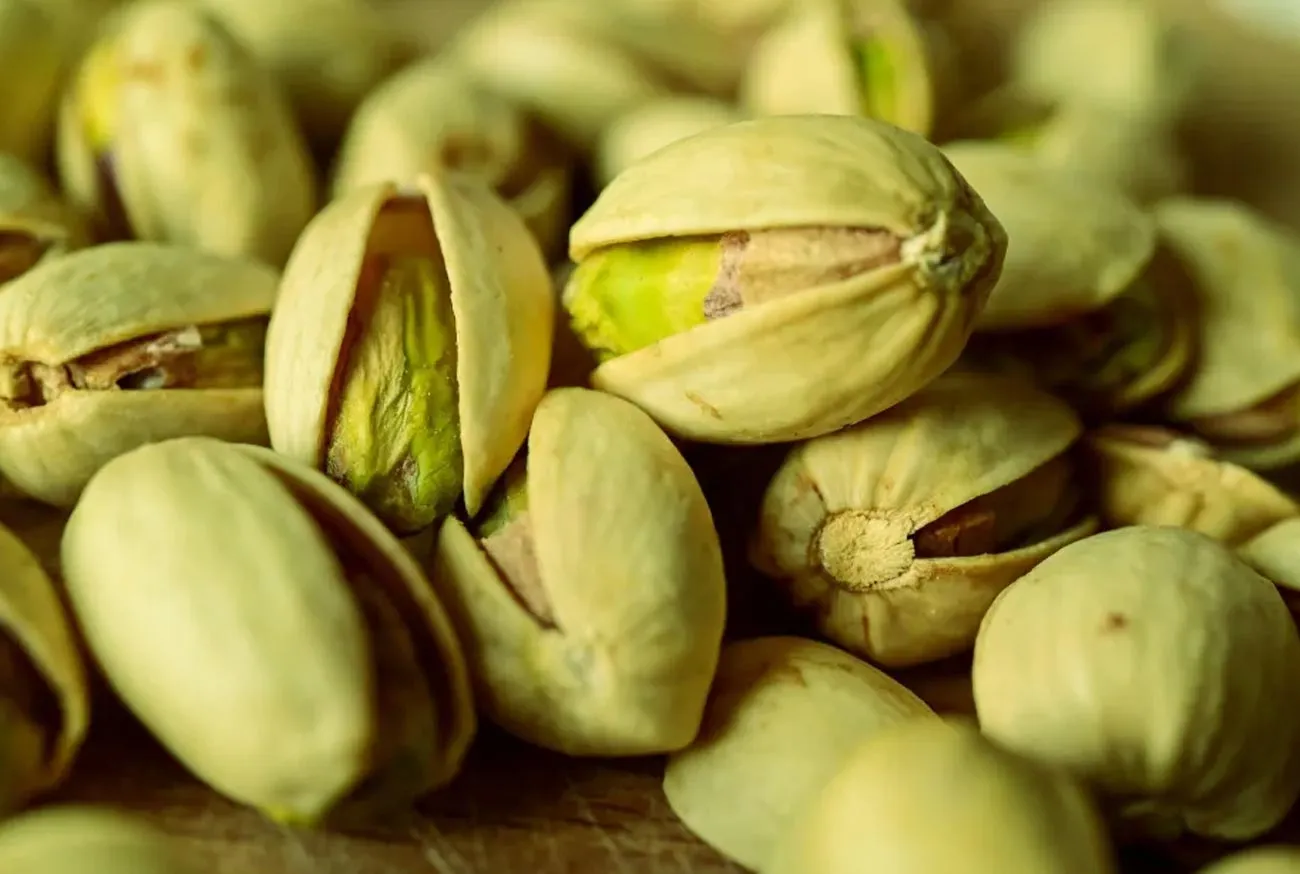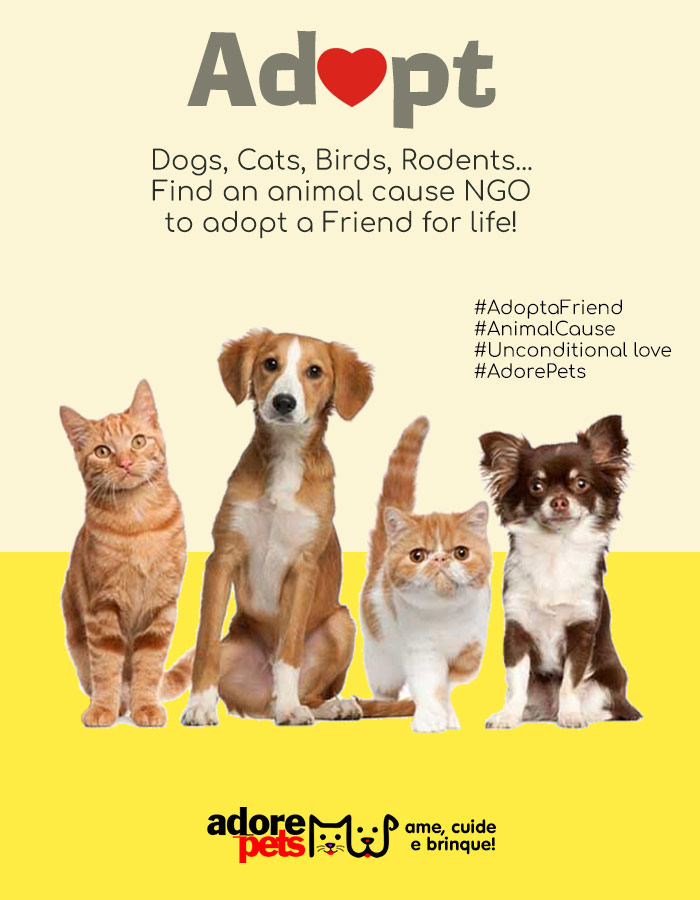What are pistachios, and why are they so appreciated?
Pistachios are a type of nut known for their unique flavor and versatility in sweet and savory recipes. Cultivated in various parts of the world, they are consumed raw or used in sophisticated culinary preparations. Rich in nutrients, pistachios have a nutritional profile that attracts both gourmets and those seeking a healthier diet.
Characteristics of pistachios
- Origin and cultivation: Pistachios are mainly grown in arid and temperate regions. Countries like Iran, the United States, and Turkey are major producers of this nut.
- Nutritional value: Among its main components, we find healthy fats (mostly monounsaturated), proteins, fiber, vitamins (such as vitamin B6), and minerals (like potassium and magnesium).
- Culinary versatility: Whether eaten plain, roasted, or added to recipes, pistachios are valued for their flavor and crunchy texture.
Although they are a beneficial food for humans, their inclusion in a dog’s diet requires special care. After all, what is healthy for us may not be ideal for our pets.

Nutritional analysis of pistachios: benefits and points of caution
To understand whether dogs can eat pistachios, it’s important to know the nutritional components of this food and how they can impact your pet’s health.
Nutritional benefits
- Healthy fats:
Pistachios contain monounsaturated and polyunsaturated fats that are beneficial for the heart and help in the absorption of fat-soluble vitamins. In controlled amounts, these fats can contribute to healthier skin and coat. - Proteins:
Although not a complete protein source, pistachios offer a reasonable amount of plant-based proteins, which can complement your pet’s diet. - Fiber:
The fiber content aids digestion and can contribute to the proper functioning of the gastrointestinal system. - Vitamins and minerals:
Pistachios are a good source of vitamin B6, which aids metabolism, as well as potassium and magnesium, essential for electrolyte balance and muscle health.
Points of caution
Despite the benefits, there are aspects to consider before offering pistachios to your dog:
- High caloric content:
As a nut, pistachios are quite calorie-dense. Even in small amounts, they can contribute to weight gain if consumed excessively, especially in dogs prone to obesity. - Risk of toxicity:
Some pistachios may contain additives, salt, or seasonings that are harmful to dogs. Additionally, the presence of mold or other contaminants can pose health risks. - Digestive difficulties:
Dogs have a different digestive system than humans, and consuming pistachios, especially with shells, can cause gastrointestinal issues like vomiting or diarrhea.
Read also:
- Nutrition: Essential food and supplements for your senior Dog
- The importance of proper nutrition for your Pet
- Know some forbidden foods to be given to dogs and cats
- Food-inspired Dog Names: Creativity and cuteness
Can dogs eat pistachios? Myths and truths
The big question on many owners’ minds is: can dogs eat pistachios? The answer isn’t so simple and depends on various factors.
The truth behind the question
Generally, dogs can eat pistachios in small amounts, as long as they are unsalted, shelled, and free of any additives. However, this doesn’t mean pistachios should be a regular part of your pet’s diet.
Common myths
- Myth 1: Pistachios are a safe snack for any dog.
Truth: While some dogs may digest pistachios without issues, others may have adverse reactions. Each dog is unique, and what works for one may not work for another. - Myth 2: A small amount of pistachios won’t harm.
Truth: Even in small amounts, pistachios can cause gastrointestinal discomfort in sensitive dogs. It’s always advisable to consult a vet before introducing new foods into their diet. - Myth 3: Pistachios can replace traditional dog treats.
Truth: Despite their nutrients, pistachios don’t have the same balanced composition as treats specifically formulated for dogs. A dog’s diet should be balanced and planned to meet all their nutritional needs.
Studies and veterinary guidelines
Many veterinarians recommend caution when introducing human foods into a dog’s diet. The general guidance is that if you want to offer pistachios to your dog, they should be:
- Unsalted and unseasoned:
Excess salt can lead to heart and kidney problems in dogs, among other health issues. - Shelled:
The pistachio shell can pose a choking hazard or cause intestinal blockages, especially in small dogs. - Offered in very small amounts:
Pistachios should only be an occasional treat, never replacing complete meals or dog-specific treats.

Expert advice: when and how to offer pistachios
The decision to offer pistachios to your dog should be made cautiously and always after consulting a veterinarian. Here are some practical tips from experts:
Step-by-step guide to safely offering pistachios
- Consult your vet:
Before introducing any new food into your dog’s diet, schedule a consultation to assess if they have any health conditions that could be worsened by consuming nuts. - Choose natural pistachios:
Make sure the pistachios are 100% natural, with no added salt, sugar, or seasonings. Look for organic products from reliable sources. - Remove the shell:
Only offer the inner seed of the pistachio. The shell can cause damage or blockages in the digestive tract. - Introduce gradually:
If your vet approves, start by offering a very small amount to see how your dog’s digestive system reacts. Watch for signs of discomfort, vomiting, or diarrhea. - Monitor closely:
After introduction, keep an eye out for any adverse reactions, and if you notice anything unusual, stop consumption and consult your vet immediately.
When to avoid pistachios
- Dogs with a history of allergies or food sensitivities:
If your dog has had allergic reactions to other foods, it’s best to avoid introducing pistachios. - Overweight dogs or those with weight issues:
Due to their high caloric content, pistachios are not recommended for animals that need to control calorie intake. - Dogs with chronic digestive problems:
If your pet has a history of gastrointestinal issues, any unconventional food can pose a risk.
Benefits and risks: balancing the scale
When analyzing whether dogs can eat pistachios, it’s essential to weigh the nutritional benefits against the potential risks.
Potential benefits
- Source of healthy fats:
In theory, the monounsaturated fats in pistachios can help maintain healthy skin and coat. - Protein supplement:
The plant-based proteins can offer an interesting dietary complement, though they don’t replace the animal-based proteins essential for dogs. - Vitamins and minerals:
Components like vitamin B6 and potassium can support metabolism and muscle function, but it’s important to remember that these nutrients are also present in balanced dog food.
Risks and precautions
- Excess calories:
Even small amounts of pistachios can contribute to weight gain if added to an already calorie-rich diet. Obesity is a growing problem in pets. - Digestive issues:
Digesting nuts can be difficult for some dogs, leading to discomfort, diarrhea, or even pancreatitis. - Risk of obstruction:
The pistachio shell is a real danger to digestive health, potentially causing intestinal blockages and serious complications. - Allergic reactions:
Although rare, some dogs may develop allergies to new foods. It’s always important to monitor any changes in health or behavior after introducing a new treat.
Myths and truths: unraveling the relationship between dogs and pistachios
The internet is full of opinions and experiences from owners who have offered pistachios to their dogs. Let’s separate facts from assumptions.
Myth: “If my dog ate pistachios once without issues, they can eat them regularly.”
Truth:
Each animal is unique. Even if a dog seems to tolerate pistachios, it doesn’t mean the food is safe for regular consumption or for other dogs. Factors like age, breed, size, and health history influence their ability to digest the food.
Myth: “All store-bought pistachios are safe for dogs.”
Truth:
Many commercial pistachios contain salt, preservatives, and other additives that can be harmful to dogs. The only safe way to offer this food is to choose 100% natural pistachios, always shelled.
Myth: “Pistachios are a miracle food that can bring many health benefits to pets.”
Truth:
Although they contain interesting nutrients, pistachios are not a miracle food. They should only be seen as an occasional treat and never as a substitute for a balanced diet specifically formulated for dogs.
Practical tips for a balanced canine diet
Regardless of whether you decide to offer pistachios to your dog, maintaining a balanced diet is essential for your pet’s health. Check out some practical tips:
- Choose high-quality dog food:
Invest in food specifically formulated for your dog’s species and age group. Trusted brands ensure that the necessary nutrients are present in every meal. - Vary the treats:
Instead of focusing on just one type of food, diversify the treats. Fruits like apples (without seeds), carrots, and even pumpkin chunks can be healthy options. - Avoid processed foods:
Many commercial treats contain additives and preservatives that can harm your pet’s health. Opt for natural or homemade treats. - Consult your vet:
Any changes to your pet’s diet should be guided by a professional. They can recommend the best food options and ideal quantities to avoid health issues. - Hydrate your pet:
Fresh, clean water should always be available. Proper hydration is essential for the body’s functioning and aids digestion.
Healthy alternatives to pistachios for treats
If you’ve discovered that pistachios may not be the best choice for your dog, don’t worry. There are many healthy alternatives that can provide variety and enjoyment in your pet’s diet without the associated risks.
Fruits and vegetables your dog can eat
- Apples (without seeds):
Rich in fiber and vitamins, apples can be cut into small pieces as a refreshing treat. Remember to remove the seeds, as they can be toxic. - Carrots:
Low in calories and excellent for dental health, carrots are a great option for chewing and fun. - Pumpkin:
A source of fiber and nutrients, pumpkin can aid digestion and provide a sweet flavor many dogs love. - Cucumber:
Hydrating and light, cucumbers are ideal for hot days and can be offered in slices.
Homemade and natural treats
If you enjoy preparing food for your pet at home, there are many healthy recipes that can replace pistachios. Some suggestions include:
- Chicken and vegetable balls:
A mix of cooked chicken with carrots, pumpkin, and oats can result in tasty and nutritious treats. - Whole-grain dog biscuits:
Use oat flour, eggs, and a touch of honey to prepare homemade biscuits. You can add pumpkin puree to enrich the recipe. - Sweet potato chips:
Thinly sliced and baked sweet potatoes become a crunchy treat without added salt or preservatives.

What experts recommend: opinions from veterinarians
Several veterinarians have weighed in on the inclusion of unconventional foods, like pistachios, in a dog’s diet. While some say that, in minimal amounts, natural pistachios may be tolerated, the majority advise caution.
Key recommendations from professionals
- Moderation is key:
Even though pistachios have interesting nutrients, they shouldn’t be consumed in large quantities. Moderation is crucial to avoid health problems. - Check the source:
If you choose to offer pistachios, always select natural products, unsalted, shelled, and unseasoned. The quality of the food is critical to avoid risks. - Constant monitoring:
When introducing a new food, closely observe your pet’s reaction. Signs of discomfort, changes in appetite, or behavioral shifts should be evaluated immediately. - Don’t replace a balanced diet:
Treats and complementary foods should never replace a complete diet formulated for a dog’s nutritional needs. They should only be an occasional indulgence.
How to safely offer pistachios (if your vet allows it)
If your vet approves and you decide to offer pistachios to your dog, follow these recommendations to minimize risks:
- Food preparation:
- Remove all shells from the pistachios.
- Ensure the pistachios contain no salt, sugar, or additives.
- Minimal portion:
- Start by offering just one or two shelled pistachios.
- Observe your pet’s reaction during the first 24 hours.
- Gradual integration:
- If there are no adverse reactions, you can occasionally offer small amounts.
- Keep pistachios as an occasional treat, never as a regular part of the diet.
- Hygiene and storage:
- Store pistachios in a dry, cool place to avoid contamination.
- Keep them out of reach of children and other pets to prevent accidental consumption.
General tips for your dog’s health and nutrition
Keeping your dog healthy goes far beyond offering unique treats. A balanced diet and healthy habits are essential to ensure a good quality of life. Check out some valuable tips:
Balanced diet
- High-quality dog food:
Choose food that meets your pet’s specific needs. Check the nutritional composition and opt for products recommended by veterinarians. - Diet variety:
Although dog food is the base, natural treats and fresh foods can complement the diet, as long as they’re offered in moderation.
Exercise and stimulation
- Daily activities:
Walks, playtime, and exercise are essential to maintain an ideal weight and mental health. - Stimulating environment:
Provide toys and challenges that encourage physical and mental activity, preventing boredom and unwanted behaviors.
Preventive care
- Regular check-ups:
Periodic visits to the vet help monitor your pet’s overall health and adjust their diet as needed. - Vaccination and deworming:
Keep vaccination records and preventive treatments up to date to avoid diseases. - Hydration:
Ensure your dog has constant access to fresh, clean water, especially on hot days or after intense physical activity.
Stories and experiences: pet owners’ tales
To better illustrate the discussion about whether dogs can eat pistachios, it’s interesting to hear real stories from owners who have tried offering this treat to their dogs. Although experiences vary, many stories bring important lessons about moderation and the importance of following veterinary advice.
A positive experience with caution
Mariana, owner of a Golden Retriever named Thor, shares that she decided to test a different treat after reading about the benefits of nuts for humans.
"I’ve always tried to diversify Thor’s treats, and after consulting my vet, I decided to offer a shelled pistachio. I gave just a small piece, and to my surprise, he had no issues. Today, pistachios are an occasional treat, and I’m very careful with the quantities."
The importance of listening to the expert
Carlos, owner of a Shih Tzu, shares that he tried offering pistachios but noticed his dog had stomach discomfort.
"After offering a shelled pistachio, I noticed Bruno started showing signs of pain and even vomiting. I took him to the vet immediately, who explained that pistachios, even in small amounts, may not be suitable for all dogs. Today, I avoid any type of nut and opt for treats specifically formulated for dogs."
These stories reinforce that, although some dogs may tolerate pistachios, each pet is unique, and professional guidance is always essential.
Reflection: The importance of conscious choices in canine nutrition
When considering whether dogs can eat pistachios, we’re reminded that every decision about our pet’s diet has a direct impact on their health and well-being. In a world where we’re constantly bombarded with new food trends, it’s crucial to return to the basics: care and responsibility for the life entrusted to us.
Have you ever wondered if that innovative treat is truly safe for your dog? Or if that viral recipe on the internet is compatible with your pet’s nutritional needs? These doubts are normal and reflect the love and commitment we have for our four-legged friends.
By making informed decisions and always seeking expert advice, you not only protect your pet’s health but also strengthen the bond of trust and affection between you.
Care, inform, and share the best for your pet
After thoroughly exploring the question “can dogs eat pistachios,” it’s clear that, although pistachios have interesting nutrients, they should be offered with extreme caution. The potential benefits don’t outweigh the risks when consumed without guidance or in inappropriate amounts. Your pet’s safety and health should always come first.
In summary:
- Dogs can eat pistachios, but in moderation: Only if they’re unsalted, shelled, and in very small amounts.
- Always consult a vet: Each animal is unique, and professional advice is essential to avoid complications.
- Opt for safe alternatives: There are many natural treats that can be offered without risks, ensuring a varied and balanced diet.
- Constant monitoring: Watch for any signs of discomfort after introducing new foods and be prepared to act quickly.
Remember: nutrition is a crucial part of caring for your pet, and conscious choices reflect the love and commitment you have for their health.
References and recommended reading
For those who want to delve deeper into the subject, check out the following reliable sources and readings:
- Article “Canine nutrition: risks and benefits of natural treats” – An in-depth look at how different foods can affect a dog’s health.
- Veterinary guide on animal nutrition – Expert recommendations on including human foods in a dog’s diet.
- Recent studies on nuts in pet nutrition – Scientific research analyzing the impacts of nut consumption in animals.
Understand that...
The journey of caring for a pet is full of discoveries and learning. Each new doubt, like “can dogs eat pistachios,” pushes us to seek knowledge and act responsibly. May this article be a tool to help you provide the best for your four-legged friend, ensuring a long, healthy, and happy life.
Don’t forget:
- Like, share, and save this content.
- Subscribe to our newsletter to receive more tips and information about the pet world.
- Explore other Adore Pets content and discover how small gestures can transform your furry friend’s life.
We hope this content has been helpful to you. Keep following Adore Pets for more tips, curiosities, and information that inspire better coexistence between humans and animals. After all, caring for a pet is caring for a being that fills our days with joy and companionship!

















Add comment